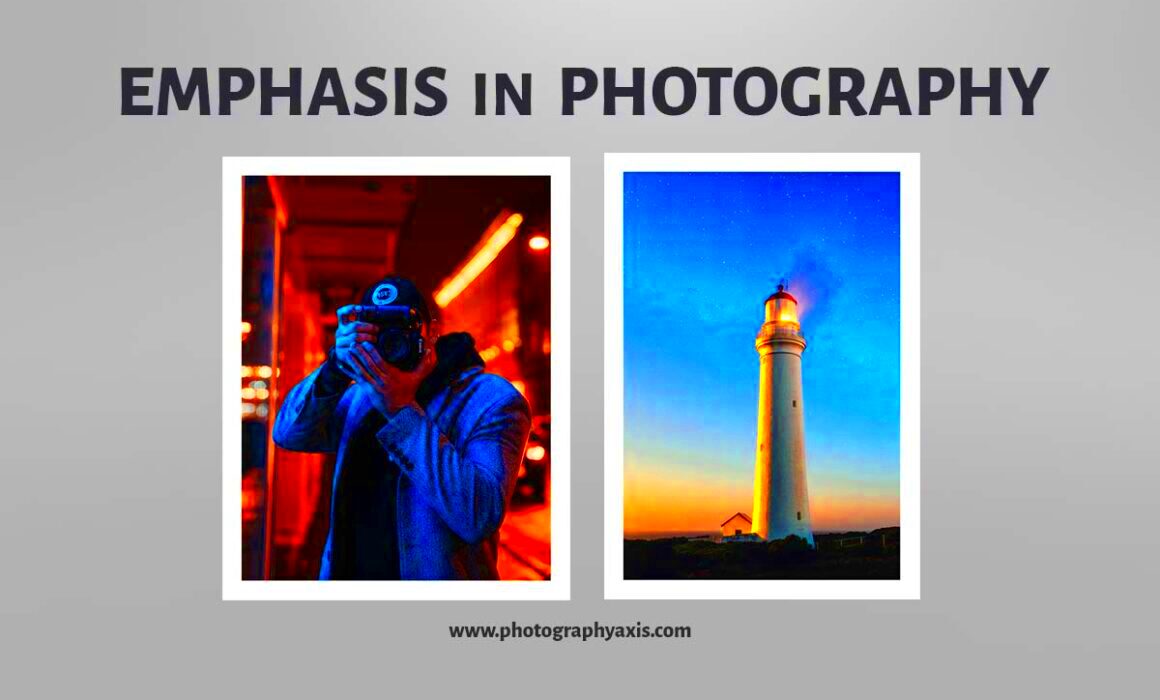The images emphasize on attracting the viewer’s focus to a particular part of an image. Emphasizing on a subject or element helps in delivering a message or emotion in a stronger way. It is like narrating a story which has to highlight certain characters or scenes. In order for your images to be appealing as well as well as having an impact you should employ many methods.
Choosing the Right Subject for Emphasis

It is crucial choosing right subject for the creation of emphasis in one’s photographs. Here are some tips that might assist you to select your focal point.
- Identify the Message: What do you want to convey? Your subject should align with your overall message.
- Consider Relevance: Choose subjects that resonate with your audience. What are they interested in?
- Visual Interest: Look for subjects that stand out due to their shape, color, or texture.
Bear in mind that the topic must be not only relevant but also interesting enough to capture attention. You may want to take several pictures to see which one has the strongest emphasis on its subject matter. A well-defined subject can lead the viewer’s eye and make stronger the narrative your image represents.
Using Color to Create Focus
As an artistic people, color provides us with a way to create images that stand out. Colors have emotional implications and they can be used to bring certain aspects into focus. Colors can be used wisely in the following manner:
- Contrast: Use contrasting colors to make your subject pop. For example, a bright red flower against a green background stands out.
- Monochromatic Schemes: Using varying shades of the same color can create a harmonious look while still emphasizing your subject.
- Color Psychology: Different colors evoke different feelings. For instance, blue can convey calmness, while yellow can indicate happiness.
The powerful emotional gestures could be made through the colors in the image. Consider the mood that you want to achieve and then go for suitable colors; they will guide attention.
Framing and Composition Techniques
Framing and composition are essential aspects of any photo that draw attention to its main point. Consider composition as the structure of your picture; it determines how the subject interacts with other components in the frame and background. By applying particular methods, you may build a visual hierarchy that directs the observer’s focus. In this article, we will discuss some practical techniques for framing and composition.
- Rule of Thirds: Imagine dividing your image into a 3x3 grid. Placing your subject along these lines or at their intersections creates a more balanced and engaging composition.
- Leading Lines: Use natural lines within the scene to lead the viewer's eye to the subject. Roads, paths, or even shadows can serve this purpose.
- Framing within the Frame: Use elements like trees, windows, or doors to create a frame around your subject. This technique draws attention and adds depth to the image.
- Negative Space: Incorporating empty space around your subject can emphasize its importance. It gives the subject room to breathe and can create a feeling of isolation or focus.
Have a go at applying the techniques during your photo shoots. With the right arrangement, your pictures can soar to greater heights, emphasizing the subject and its intended purpose.
Lighting Effects for Emphasis
It’s no secret that lighting can make or break a photograph. The mood, depth, and subject all come from this element of photography. Therefore, mastering the art of light manipulation is one way to improve your images. Below are some points to remember when it comes to using light for emphasis.
- Natural Light: Shooting during golden hour—shortly after sunrise or before sunset—can provide warm, soft light that adds beauty and depth to your subject.
- Backlighting: Position your light source behind the subject to create a silhouette effect, making it stand out against a brighter background.
- Spotlighting: Use a strong light source focused on your subject while keeping the background dim. This technique draws immediate attention to the focal point.
- Shadows and Highlights: Play with shadows and highlights to add dimension. Shadows can create depth, while highlights can accentuate important features.
Using various lighting techniques, it becomes possible to discover that which can accentuate your subjects and make them more appealing.
Contrast to Highlight Key Elements
A great way to make your images stand out is through contrast. Contrast gets created when elements that are utterly different in color or texture or brightness are placed next to each other. This creates a bold and engaging effect. To use contrast effectively in photography, consider:
- Color Contrast: Pair complementary colors to enhance visual interest. For example, a bright orange subject against a deep blue background creates eye-catching contrast.
- Light and Dark: Use high contrast between light and dark areas to create drama and focus. A well-lit subject in a shadowy setting stands out and captures attention.
- Textural Contrast: Mix smooth surfaces with rough textures. For example, a shiny object against a gritty background can create a compelling visual narrative.
- Size Contrast: Place a small object next to a larger one to create a sense of scale, which can enhance the overall emphasis on the smaller subject.
By utilizing contrast strategically in your images, you are able to emphasize important aspects and leave behind a formidable visual influence that stays with the observers.
Incorporating Text for Added Impact
Injecting images with text is one way to improve their contents and grant them meaning. It helps to express one’s thoughts better and can control the feelings of the observer. No matter if you are creating social networking posts, commercial brochures or blogs, knowing how best to use words can really change things. Here are some points to take into account when including captions in your images:
- Choose Readable Fonts: Select fonts that are easy to read. Avoid overly decorative styles that might distract from your message.
- Use Contrasting Colors: Ensure the text color stands out against the background. For instance, dark text on a light background or vice versa helps maintain clarity.
- Positioning Matters: Place your text where it enhances the image without overpowering it. Often, placing text at the top or bottom works well.
- Limit Text Amount: Keep your message concise. A few impactful words can be more effective than long sentences.
- Consider Text Hierarchy: Use different sizes and styles to create emphasis. For example, make the main message larger and bolder, while supporting details can be smaller.
You can enhance your audience’s experience and make it more appealing by wisely combining the texts with pictures.
FAQs about Emphasis in Images
Some questions can be raised about stress in pictures: Here are a few common questions which may help clear up the air:
- What is emphasis in photography? Emphasis is a technique used to draw attention to a particular subject or element in an image, guiding the viewer's focus.
- How do I choose the right subject for emphasis? Consider the message you want to convey and select subjects that are visually interesting and relevant to your audience.
- Can color affect emphasis? Absolutely! Colors can evoke emotions and highlight specific areas, helping to create focus in your images.
- What is the importance of composition? Composition determines how elements are arranged in a photograph. A well-composed image can enhance emphasis and storytelling.
- How does lighting impact emphasis? Lighting sets the mood and can create depth. Proper lighting can make your subject stand out or create dramatic effects.
It is indeed true that these are some of the commonly asked questions, but feel free to dig deeper or try out things yourself!
Conclusion on Effective Emphasis in Images
In any photography or design field, mastering emphasis in the pictures is very important for passing a hard message. By understanding and sometimes implementing ways such as selection of appropriate subject, utilization of color and contrast, normalization of composition methods plus addition of texts, photographs can be usually made more powerful. Remember that drawing your viewer’s eyes towards them is what you are trying to achieve through your images which include words. Therefore, it’s essential to play around with different approaches until you find out what works best for you rather than sticking to only one thing always. With time, you will acquire the necessary abilities that give strength to images which connect with other people!

 admin
admin








